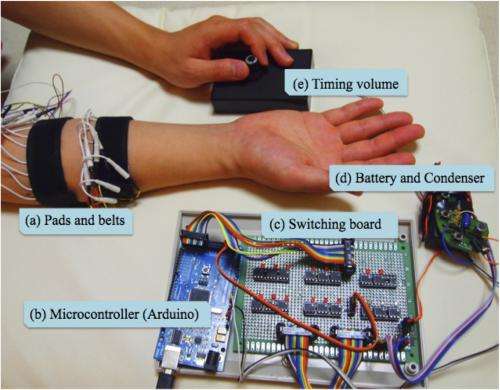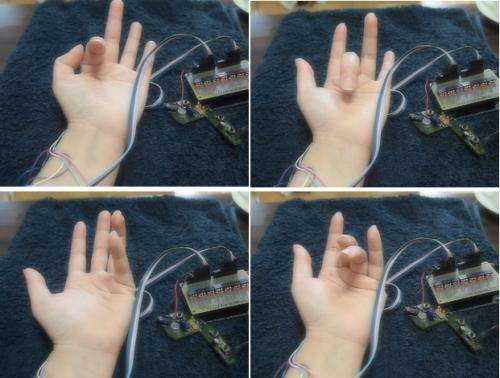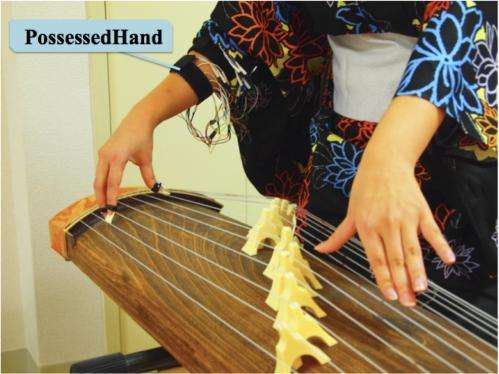Image: Interfaculty Initiative in Information Studies, The University of Tokyo
(PhysOrg.com) -- In an interesting meshing of robotics and prosthetics development, Japanese researchers from Tokyo University working in conjunction with Sony Corporation, have created an external forearm device capable of causing independent finger and wrist movement. Introduced on the Rekimoto Lab website, the PossessedHand as it’s called can be strapped to the wrist like a blood pressure cuff and fine tuned to the individual wearing it. The PossessedHand sends small doses of electricity to the muscles in the forearm that control movement, and can be "taught" to send preprogrammed signals that replicate the movements of normal wrist and finger movements, such as plucking the strings of a musical instrument.
Though the signals sent are too weak to actually cause string plucking, they are apparently strong enough to cause the user to understand which finger is supposed to be moved, thus, the device might be construed to be more of a learning device than an actual guitar accessory.
Currently devices that do roughly the same thing are done with electrodes inserted into the skin, or work via gloves worn over the hand, both rather cludgy and perhaps somewhat painful. This new approach in contrast, is said to feel more like a gentle hand massage.
Image: Interfaculty Initiative in Information Studies, The University of Tokyo
Though the original purpose of the PossessedHand seems to be as an aid to help people learn to play musical instruments, something that has inspired a bit of criticism from the musical community due to the fact that nothing is actually learned when using the device; the hand basically becomes an external part of the instrument, while the brain remains passive; it seems clear the device could be used in multiple other ways. For example, it could be used by hearing people to assist in speaking with deaf sign-language users, or to help people type who have never learned how, or perhaps more importantly to help paralyzed people or those suffering from a stroke.
Interfaculty Initiative in Information Studies, The University of Tokyo
In these instances it’s not always imperative that the user actually learn anything new, just that they are able to communicate when they want to. If the programming of the device could be made to work in real time in other ways, by the user, then its value would greatly increase. For example if a person could speak out loud into a microphone and those words could then be captured and translated to sign-language and transferred directly to their fingers, deaf people would instantly be able to communicate with anyone they meet who is willing to wear the cuff.
More information: lab.rekimoto.org/projects/possessedhand/
© 2010 PhysOrg.com






















